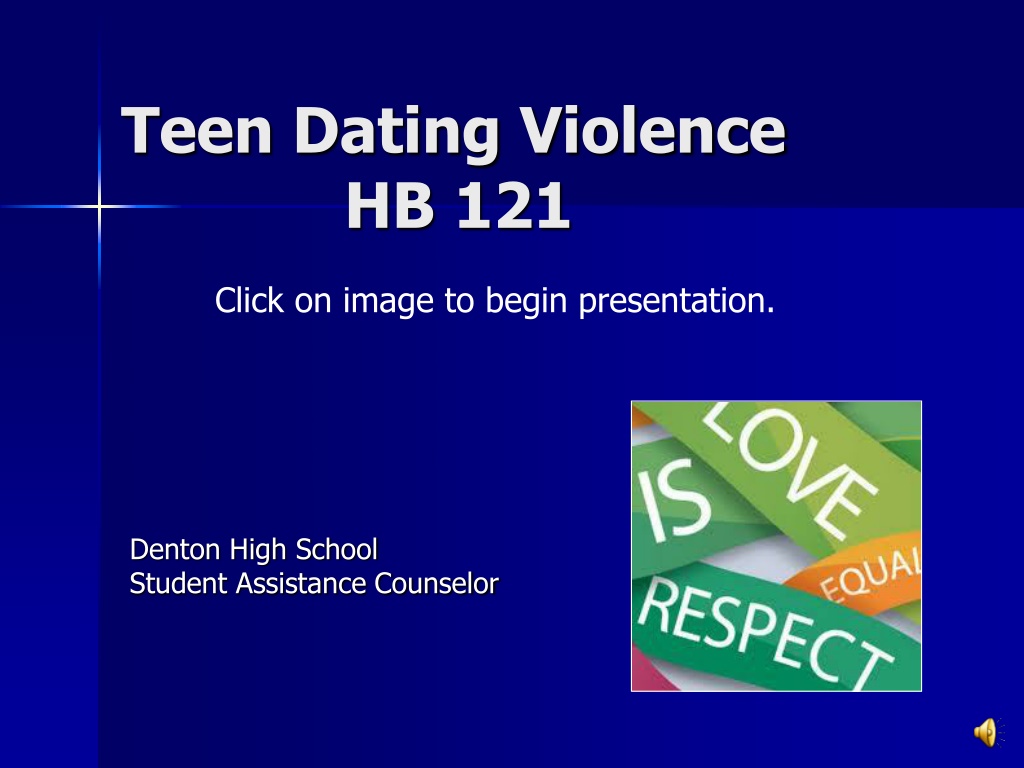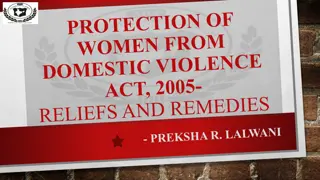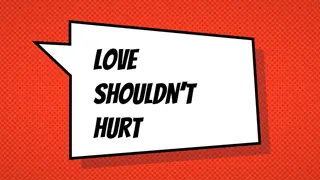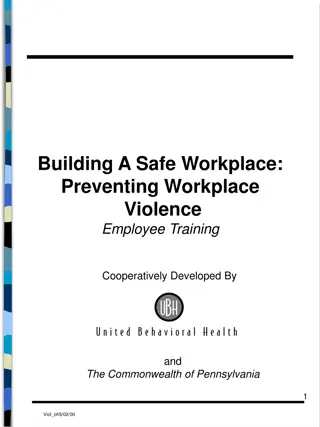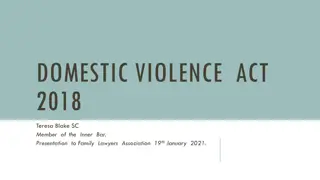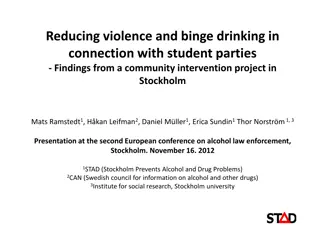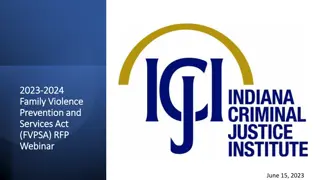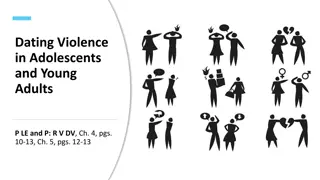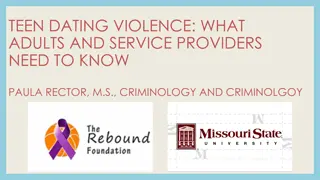Understanding Teen Dating Violence and Legislative Response
The presentation sheds light on teen dating violence, citing real-life examples like the tragic incident involving Ortralla Mosley. It discusses the prevalence of such violence, types of abuse (physical, emotional, sexual), and legislative actions like Texas House Bill 121 requiring schools to address dating violence. The importance of recognizing warning signs and implementing prevention programs is emphasized.
Download Presentation

Please find below an Image/Link to download the presentation.
The content on the website is provided AS IS for your information and personal use only. It may not be sold, licensed, or shared on other websites without obtaining consent from the author. Download presentation by click this link. If you encounter any issues during the download, it is possible that the publisher has removed the file from their server.
E N D
Presentation Transcript
Teen Dating Violence HB 121 Click on image to begin presentation. Denton High School Student Assistance Counselor
Ortralla Mosley On March 27, 2003, 15-year-old Ortralla Mosley broke up with her 16- year-old boyfriend, Marcus McTear. Both were sophomores at Reagan High School in Austin, Texas. The following day, Marcus stabbed Ortralla to death in the hallway at school.
Prevalence 2001 Harvard School of Public Health: 20% of female students (grades 9 12) reported experiencing physical or sexual violence or both from a dating partner. (definition - shoved, slapped, hit, or forced into sexual activity).
Prevalence 50% to 80% of teens have reported knowing others who were involved in violent relationships. In 1995, 7% of ALL murder victims were young women killed by their boyfriends. Factsheets * Alliance: TDV
Legislative Action In response to increasing concerns re: teenage dating/relationship violence, Texas recently passed House Bill 121, which requires schools to implement dating violence policies and programs for students, staff, and parents.
3 Types of Abuse Physical Pinching Hitting Slapping Shoving Squeezing/Grabbing (typically arms, chin) Hair-pulling Choking Detaining
3 Types (continued) Emotional Name calling, threats, screaming, yelling, ridiculing, emotional blackmailing, stalking, cyber bullying (ridicule, photographs, etc.) and insults/putdowns. Can include: jealousy, possessiveness, controlling behaviors, isolation from friends and family, humiliation, and monitoring of other s communications.
3 Types (continued) Sexual verbal sexual abuse: sexual slurs or attacks on a person s gender or sexual orientation. unwanted sexual contact (kissing or touching).
3 Types (continued) Sexual The use of intimidation or coercion to get someone to engage in sexual activity. (coercion includes.. pestering, pressuring). Forcible assault (with or w/out weapon) Administration of drugs or alcohol Age difference
What do you see happening? Click on the image to see video.
Who Are The Victims? Teens in all ethnic groups, socioeconomic groups, and geographic regions. Boys are more likely to be pinched, slapped, scratched, or kicked by dating partners. Girls are more at risk for severe violence, sexual violence, and injuries requiring medical attention. Pregnant teens are at greater risk for physical assault by intimate partners. Girls experience more psychological abuse from dating partners than boys. Young women, ages 16 to 24 years, experience the highest rate of relationship violence. Alliance: TDV Factsheets
Teens at Greatest Risk for Victimization (male and female) Low self-esteem Homes where there is domestic violence Homes where females are negated or demeaned Passive or non-assertive Emotionally deprived Poor relationship with parents Absent/uninvolved father History of Sexual Abuse
Who Are The Abusers? Both male and female teens commit dating violence but . Boys initiate the violence more often Boys typically use greater force Boys are more repeatedly abusive to their dating partners than girls. Alliance: TDV Factsheets
Who are the Abusers? Low self-esteem, jealous, controlling Homes where there is domestic violence Homes where females are negated or demeaned Aggressive (Poor anger management skills) Emotionally deprived Poor relationship with parents Absent/uninvolved or abusive father Impulsive Power & Control oriented
How do I know if my friend is in trouble? Unexplained bruises, scratches, or injuries Fear of upsetting their partner Partner exhibits controlling behavior (what to wear, where to go, who he/she can go with) Friend s partner makes all the decisions Friend s partner checks up on his/her whereabouts (call logs, text messages incl.) Friend must account for their time Friend s partner is jealous or controlling
More indicators Verbal abuse, criticism and insulting of the victim Minimization of violence or abuse Loss of interest in things that were once important Sudden change in appearance or behavior Spending less time with friends and family Sudden changes in mood or personality Begin using drugs or alcohol
Reporting Challenges Teens generally do not tell people when they are involved in a violent relationship A teen may believe that reporting a problem will get them into more trouble Most often, a teen will tell their friends and not an adult about the problem. Their friends might not know what to do to help.
Reporting Challenges Fear of their Partner Self-Blame Minimization of abuse Loyalty or love for their partner Social or religious stigma Lack of understanding of the danger
What To Do At School Tell an adult if you think your friend might be in an abusive relationship. Tell an adult if YOU are in an abusive relationship. Website DHS.Caresabout.us survey to report suspected abuse. PALS confidential drop-boxes (to be located throughout the school)
Resources for Interventions School Resources School Counselors, Administrators, Nurse, Teachers, SRO Community Agency resources Friends of the Family, MHMR Children s Advocacy Center Community Private Practitioner resources
Our Commitment To You.. The safety of students at DHS is a responsibility taken seriously by administrators, faculty, and staff. PLEASE notify us IMMEDIATELY if you or someone you know is in an abusive relationship. We have supportive procedures in place to assist victims and potential abusers.
To learn more, visit the following websites: www.loveisrespect.org www.loveisnotabuse.com www.cdc.gov/chooserespect www.acadv.org/dating.html www.thehotline.org www.breakthecycle.org
